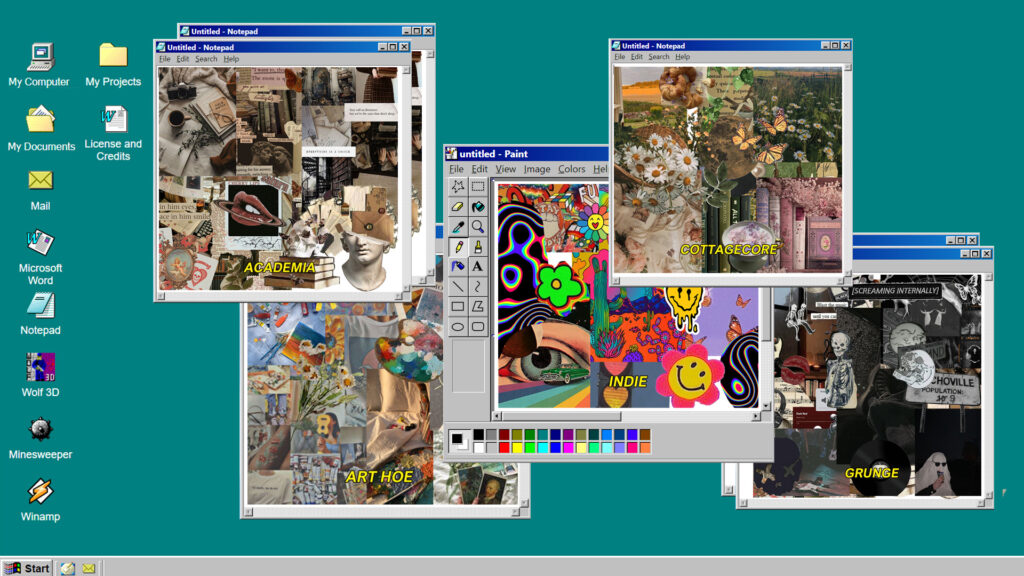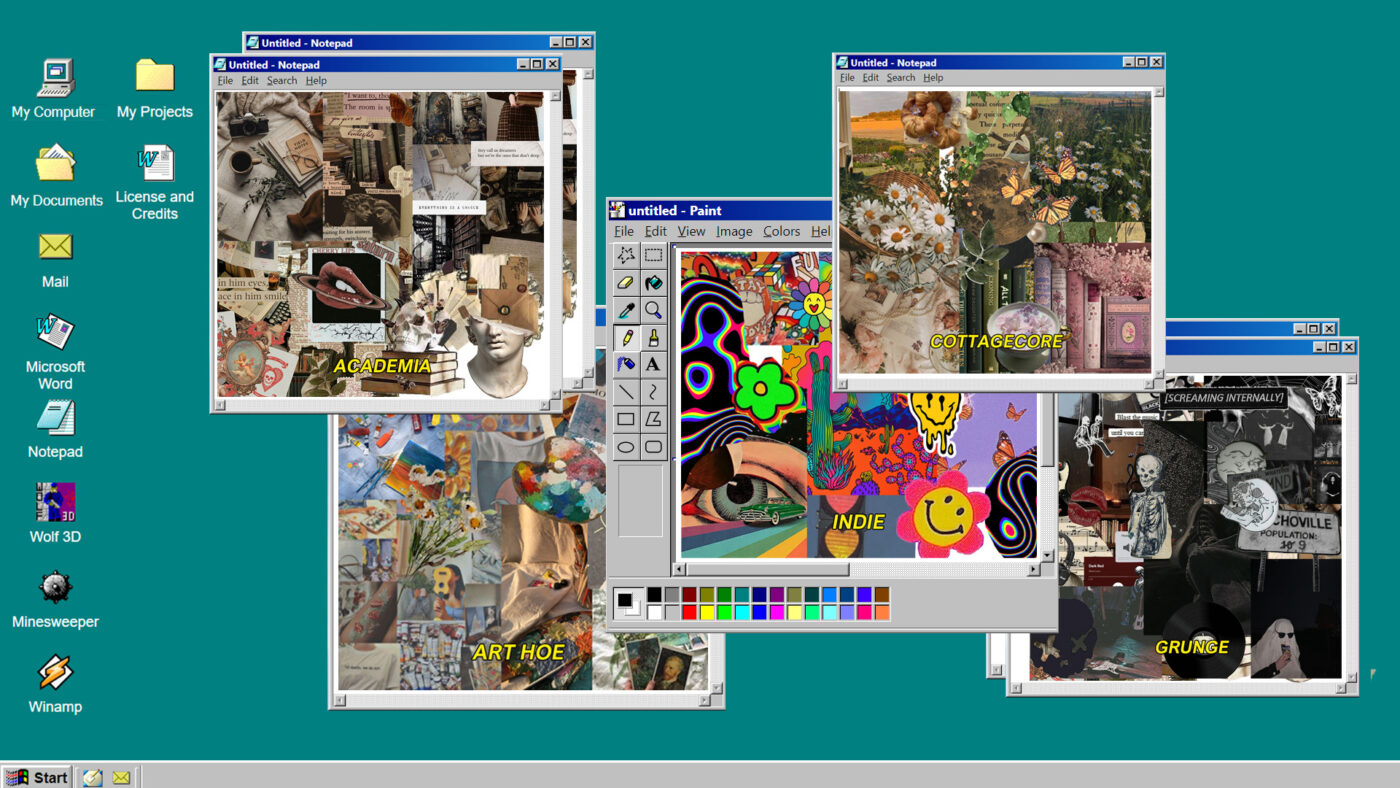
The year’s 2020, and the pandemic has left you with unprecedented amounts of free time. You walk around your house and look out the window, but nothing greets you. It is desolate, lifeless almost. Out of the silence, an aesthetic calls to you, gently nudging you to look, if only for a moment. Before you know it, it has consumed you. In its clutches, you cannot escape. It is blissful torture.
The golden bars dance with the light, their effervescent twinkling is almost sirenlike. You are no Ulysses – no cotton can block your ears, and no shackles help you resist. Tied to your mind and its hapless desire for connections, and the cage, oh! – the cage is paradise. You could pick out the shade of gold, you could polish its bars and floor. Dancing forever, the song of the siren omnipresent, you feel as though peace is second nature. Your chains are invisible, and weave themselves around you delicately, never letting go.
Dark and beautiful, it is everything you are – a gilded cage.
Maybe this is what you wanted, to belong – to feel like you belong, at least.
aesthetic
/iːsˈθɛtɪk,ɛsˈθɛtɪk/
adjective
concerned with beauty or the appreciation of beauty.
noun
a set of principles underlying the work of a particular artist or artistic movement.
While the earliest contributions to aesthetic theory go back to Plato, Aristotle and Plotinus’ writings, it was only in the early 2010s that the concept of aesthetics and its romanticisation as part of lifestyle came into play. Over the last decade or so, the internet, in particular, has seen the emergence of a plethora of aesthetics. Each of these comes with a particular lookbook, a genre of media and music, and a set of personality traits that a person who associates themselves with the aesthetic is expected to adopt.
The pandemic accelerated the pace of digital transformation. With nowhere to go, minimal physical interaction, months of isolation, stress and profound lifestyle changes, the world turned to the internet for support and comfort. Social networking sites and online communities became a haven for millions, enabling people to make connections and express their creativity in more ways than one.
In doing so, somewhere there emerged the desperation to belong, a need for validation. Social media and the discourse surrounding aesthetics fostered the idea of the perfect build, flawless skin and unrealistically productive routines, all of which were considered incredibly operational and explorative in their appeal.
WHAT MAKES AESTHETICS SO APPEALING?
These parameters are defined: they do not yield themselves to any sense of individuality. Every human being is a mix of emotions, interests, faults and virtues – the list goes on. We are inherently inclined to examine who we are, and what better way than to analyze where we fit in the world outside? It is almost like solving a puzzle. The box is usually a little damaged, and some pieces are lost. Despite this being the case, we often expect the final picture to be absolute. When assembled, it has to be creaseless, defined, and whole. Most of all, it has to be seen as the epitome of perfection.
Excellence & acceptance are probably two driving factors in our obsession with a particular aesthetic. Not everyone is looking to be perfect, but most people want to belong. Our sense of self-worth is defined primarily by how we are perceived by the rest as opposed to how we perceive ourselves. We look in the mirror, only to turn back and ask someone how we look instead as if our own eyes deceive us, lying endlessly. . At its very core, each aesthetic seeks to be a guide, a way to understand who we are.
What books do you like? Do you like books at all?
What if you don’t need to like books, but you only need to like one?
What if you never had to like one, just look as though you did?
What if, eventually, people believed that you like books?
Studies on aesthetics and their psychological appeal have been investigated for a long period, dating as far back as 1876. Their appeal is multi-layered. A deliberate flow of happiness: our eyes perceive the beauty in front of us, which eventually spreads to our thoughts. We are transfixed at that moment – we want it to last forever. The aesthetic appeal takes over our mind, and the systematic presentation of elements extends to all our senses, elevating our perspective regarding beauty. It exists in objectivity and subjectivity and has a long history of being operational. The human obsession with aesthetics goes back to the earliest civilisations, with the Etruscans, Mesopotamians, Chinese, Indians, the Celtic peoples and the Maya each having developed their own unique style and form in art. While the idea of aesthetics has undergone numerous changes over the years, it has, arguably, taken a rather different stance in the 21st century.
An aesthetic is meant to be a reflection of our thoughts, but modern perception has reduced it to nothing more than a hammer with which we can mould ourselves.
It is beyond question that aesthetics enable people to shape their sense of style and preferences regarding the clothes they wear, the songs they listen to, the books they read, the films they watch and the way they decorate their space. Aesthetics allow people to explore their interests and experiment with their style, and social media becomes their forum to do so. Social media has always been a double-edged sword. While it allows people that enjoy a certain aesthetic to mingle, it also soaks them in. As humans, it is natural to seek the thrill that comes with knowing we are appreciated for a part of our personal style.
New shoes. New clothes.
Tomorrow, You’ll be someone new.
When you look in the mirror, everything will be perfect.
Strangers on the internet will be friends.
Your friends will see you as a stranger.
You’ll greet them the way your favourite character would.
Waving and smiling, or not.
It doesn’t matter anyways. You are someone new.
HOW AESTHETIC OBSESSION AFFECTS THE HUMAN PSYCHE
An aesthetic has evolved into a multimedia experience, encompassing every sphere of one’s life.
Studies have proven that aesthetic appreciation affects our cognitive and emotional state to foster psychological and conceivably, physical well-being, too. Colour combinations, styles, and patterns all evoke various emotions in an individual.
Needless to say, it is essential to understand the neural underpinnings of the aesthetic experience, emotional processing, pleasure, and consequence, and how aesthetics and art promote well-being as well as disconsolation across various domains.
Colour psychology is an inescapable part of aesthetic culture. It is the art of manipulating the mind using certain colours, to evoke particular emotions and feelings in an individual. Colours hold the power to make you feel at ease, they can stir up memories from simpler times, they can leave you feeling all warm and fuzzy inside, or they can get your blood pumping and inspire action.
For instance, warm colours such as certain shades of red, yellow and orange evoke feelings of joy, optimism and enthusiasm. At the same time, these colours can also be used to signal danger or grab someone’s attention. In the aesthetics world, these colours predominantly make up the –“Warmcore aesthetic”. Warmcore exhibits a wide array of warm colours to elicit feelings of warmth and nostalgia in the viewer. On a parallel note, colours like black, brown, beige, and faded colours such as greys, pinks, and blues constitute – “Writer Academia”, the key values of which, being curiosity, a quest for knowledge, learning, burning passion and creativity. Along the same lines, neutral, dark and muted colours make up “Minimalism”, which characterises simplicity, sophistication and clarity.
Owing to this phenomenon, brands that endorse certain aesthetics also ensure that their products and websites alike embody the colour palette belonging to that aesthetic. An understanding of the psychology of colours is crucial in establishing a brand’s target audience and is also an aid in sending its message across.
Another aspect that draws people towards certain aesthetics is their location. Different places with expected activities, components, and types of people draw people towards the aesthetics associated with them. This category also includes specific situations during a specific period, including fictional ones, such as “Victorian London” or “Utopian Spaceship.” These location-specific aesthetics give us the sentiment associated with that place.
How location flares up on an emotional scale can be better understood by considering the ‘Urbancore’ or ‘Citycore’ aesthetic. It embodies a youthful, vivacious, and almost glamorous spirit of living the city life. Brightly lit skyscrapers, industrial architecture, traffic lights, and a ceaseless flurry of activity are at the heart of this aesthetic. Today, entire cities are associated with particular aesthetics, so much so that it becomes an undetachable part of the city’s identity. Edinburgh, for instance, is known to be dramatically dark academia, with its dark roofs, medieval architecture, cobbled streets, and not to mention, the University of Edinburgh.
When you are confined to a particular place for an indefinite period when the only glimpses you get of the outside world are through the internet, you begin to be attracted towards visuals and stories that can transfer you to that place, virtually, if not physically. You see a visual of the luscious countryside, with delicate wildflowers in full bloom and blue-winged butterflies trotting from flower to flower, and suddenly, you’re breathing in the fresh air and there’s not a worry in the world. You’re back within the four walls of your room. Maybe you’re watching Studio Ghibli, or maybe you’re just scrolling through Pinterest, pictures upon pictures of the – “Cottagecore aesthetic” filling your feed.
This feeling of escapism and the need to be somewhere else, someplace better, somewhere life is more grandiose, forms the basis of the aesthetic appeal. Finding an aesthetic that you can devote yourself to is like finding a needle in the haystack. This magic needle will solve everything for you, or so it seems. Finally, you have the tools to weave your own tale, the catch being that your materials and ideas were moulded beforehand. What we often fail to realise is how deeply we are affected by such behaviour, as it quickly turns obsessive. It can be alluring, like a golden teardrop hanging from a manchineel tree. We may see ourselves as a poète maudit, waltzing to our dark songs, blind to the consequences of our actions. We must be careful, lest we forget ourselves, and with that, our lives.
Written by Rachana Raman and Vanshika Jain for MTTN
Edited by Aayush Niraj for MTTN
Featured Image by Pradhi for MTTN

Leave a Reply
You must be logged in to post a comment.